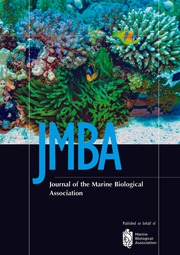No CrossRef data available.
Article contents
Biological sampling at Port-en-Bessin fish market: assessing the diversity and size structure of squid and cuttlefish populations in the English Channel
Published online by Cambridge University Press: 02 April 2025
Abstract
Monthly sampling of cephalopod at Port-en-Bessin fish market (Normandy, France) over a 30-year period, combined with commercial fishery statistics, provides essential insight into the exploitation patterns, composition and size frequencies of these resources. Port-en-Bessin cephalopod landings are shown to decrease which is consistent with the decline observed in the entire French fleet operating in the English Channel. Cuttlefish landings exhibit a bimodal length distribution which is expected for this 2-year life cycle (and two-cohort) population. Juveniles of the year are recruited from October (from 8 cm). By the end of their second year of life, cuttlefish reach their maximum size (on average about 22 cm in April–May) prior to dying following spawning. Cuttlefish average size of the second cohorts has decreased from 20 to 17 cm over the period 1996–2022. This seems to be a reduction in size rather than a change in the timing of catches. Squids are not segregated in commercial landings, and the protocol was developed to inform on the prevalence of Loligo forbesii and L. vulgaris in the catch. Both species have a 1-year life cycle with a 3-month offset (recruitment of L. forbesii occurs in June and L. vulgaris in September). Over the 30 years of data, an increase in L. vulgaris landings is observed, while L. forbesii landings have decreased. These findings, in line with climate change, consider biases such as fishermen behaviour determining landings geographical origin.
Keywords
- Type
- Research Article
- Information
- Copyright
- Copyright © The Author(s), 2025. Published by Cambridge University Press on behalf of Marine Biological Association of the United Kingdom


